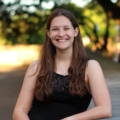Three-step docking by WIPI2, ATG16L1 and ATG3 delivers LC3 to the phagophore
Published February 6, 2024
Output Details
Preprint July 19, 2023
Published February 6, 2024
Description
The covalent attachment of ubiquitin-like LC3 proteins (microtubule-associated proteins 1A/1B light chain 3) prepares the autophagic membrane for cargo recruitment. We resolve key steps in LC3 lipidation by combining molecular dynamics simulations and experiments in vitro and in cellulo. We show how the E3-like ligase autophagy- related 12 (ATG12)–ATG5-ATG16L1 in complex with the E2-like conjugase ATG3 docks LC3 onto the membrane in three steps by (i) the phosphatidylinositol 3-phosphate effector protein WD repeat domain phosphoinositide- interacting protein 2 (WIPI2), (ii) helix α2 of ATG16L1, and (iii) a membrane-interacting surface of ATG3. Phospha- tidylethanolamine (PE) lipids concentrate in a region around the thioester bond between ATG3 and LC3, highlighting residues with a possible role in the catalytic transfer of LC3 to PE, including two conserved histi- dines. In a near-complete pathway from the initial membrane recruitment to the LC3 lipidation reaction, the three-step targeting of the ATG12–ATG5-ATG16L1 machinery establishes a high level of regulatory control.
Identifier (DOI)
10.1126/sciadv.adj8027





